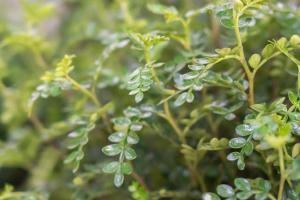Introduction
Potted plants bring beauty and life to any space, but keeping them healthy and thriving requires some maintenance. One of the most common problems that potted plants face is a grub infestation. Grubs are small insects that eat the roots of plants, causing significant damage and even death if left untreated. In this article, we will discuss how to detect and get rid of grubs in potted plants.
Detecting Grub Infestation
The first step in dealing with grubs in potted plants is to detect their presence. Signs of a grub infestation include yellowing leaves, stunted growth, and wilting. You may also notice an increase in the number of flies around your plants, as flies are attracted to the grubs. Another telltale sign is the presence of small holes in the soil around the base of the plant.
Preventing Grub Infestation
Preventing grub infestation is the best way to keep your potted plants healthy. To prevent grubs from taking up residence in your plants, be sure to use fresh soil when repotting, and avoid using infected soil or soil that has been used for plants that have had grub problems. In addition, it is important to water your plants appropriately, as overwatering can create a hospitable environment for grubs.
Getting Rid of Grubs
If you have detected a grub infestation in your potted plants, there are several methods you can use to get rid of them. One option is to handpick the grubs out of the soil using a pair of tweezers. This can be a time-consuming process, but it is effective for small infestations. For larger infestations, you may need to use an insecticide.
When choosing an insecticide, be sure to read the label carefully and follow the instructions. Some insecticides contain harsh chemicals that can damage your plants, so it is important to use a product that is safe for your particular plant species. In addition, it is important to apply the insecticide at the right time. In general, it is best to apply the insecticide in the evening, when the grubs are most active.
Another option for getting rid of grubs is to use beneficial nematodes. Nematodes are microscopic worms that feed on grubs and other harmful insects. You can purchase nematodes at your local garden center, and they are safe for most plant species. Simply mix the nematodes with water and apply them to the soil around your plants according to the instructions.
Conclusion
Dealing with grubs in potted plants can be a frustrating and challenging problem. However, with the right techniques and products, you can get rid of these pests and keep your plants healthy and thriving. Remember to detect the presence of grubs early, prevent infestations from occurring in the first place, and use safe and effective methods for getting rid of them.

 how many times do yo...
how many times do yo... how many planted tre...
how many planted tre... how many pine trees ...
how many pine trees ... how many pecan trees...
how many pecan trees... how many plants comp...
how many plants comp... how many plants can ...
how many plants can ... how many plants and ...
how many plants and ... how many pepper plan...
how many pepper plan...
































